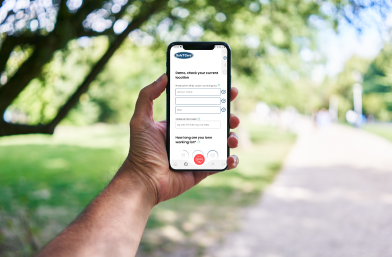The rise of mobile lone worker applications in modern workplaces
Across Australia, more employees than ever are working alone, whether it’s healthcare staff making home visits, utility workers in the field, or council staff conducting inspections. While these roles are vital, they also carry risks. That’s why more organisations are turning to mobile lone worker applications as a simple, reliable way to protect their teams.
Unlike traditional hardware devices, a lone worker app runs directly on an employee’s smartphone, making it a flexible and cost-effective option. With the right app in place, employers can meet their duty of care while giving staff peace of mind that help is never far away.
What a lone worker app actually does
A lone worker application is designed to connect at-risk employees to immediate help if something goes wrong. Key features include:
- SOS button: instantly raises an alarm to a 24/7 monitoring centre, where trained operators coordinate the fastest response.
- GPS capabilities: shares the user’s location so emergency services can reach them quickly.
- Yellow Alert: allows workers to record key details (like exact address, duration of visit, or known risks) before starting a job. If an incident occurs, operators have precise context to respond effectively.
- Man Down detection: automatically triggers an alarm if the device detects a fall, incapacitation, or lack of movement.
These features turn a phone into a personal safety lifeline.
The key benefits of mobile Lone Worker applications
1. Real-time emergency response
Every second counts in an emergency. A lone worker app connects employees directly to trained operators who can verify alerts, contact emergency services, and provide vital support. This ensures no call for help ever goes unanswered.
2. Increased confidence and wellbeing at work
Knowing they can discreetly raise an alarm reduces stress for employees, especially in unpredictable environments such as home visits or late-night retail shifts. Staff feel safer, more supported, and more willing to focus on the job at hand.
3. Easy monitoring and reporting for employers
Mobile lone worker applications give managers clear oversight. Whether through dashboards or incident reports, organisations can monitor compliance, identify risks and demonstrate a strong safety culture.
4. Cost-effective solutions
Not every business can invest in large volumes of dedicated safety devices. A mobile app provides the same core protection at a lower cost, making it ideal for organisations with a mix of office-based and mobile workers.
Case study: Safety in healthcare
One community healthcare provider introduced a lone worker app for its physiotherapists and occupational therapists visiting clients at home. During one visit, a staff member recorded a Yellow Alert before entering a property. When she failed to check out within the expected time, the monitoring centre escalated the alarm and dispatched help. Because she had left key details in her check-in, responders located her quickly and ensured she was safe.
This simple step of activating a lone worker application prevented what could have been a serious outcome.
Conclusion: Safety, compliance, and culture
Adopting a mobile lone worker application is more than just a compliance requirement under Australia’s Work Health and Safety (WHS) legislation. It’s a way to build trust, reduce risk, and support the wellbeing of your team.
By combining emergency response, proactive monitoring, and easy accessibility, lone worker apps help employers protect their people and strengthen workplace culture. In today’s high-risk environments, that protection is not optional. It’s essential.


